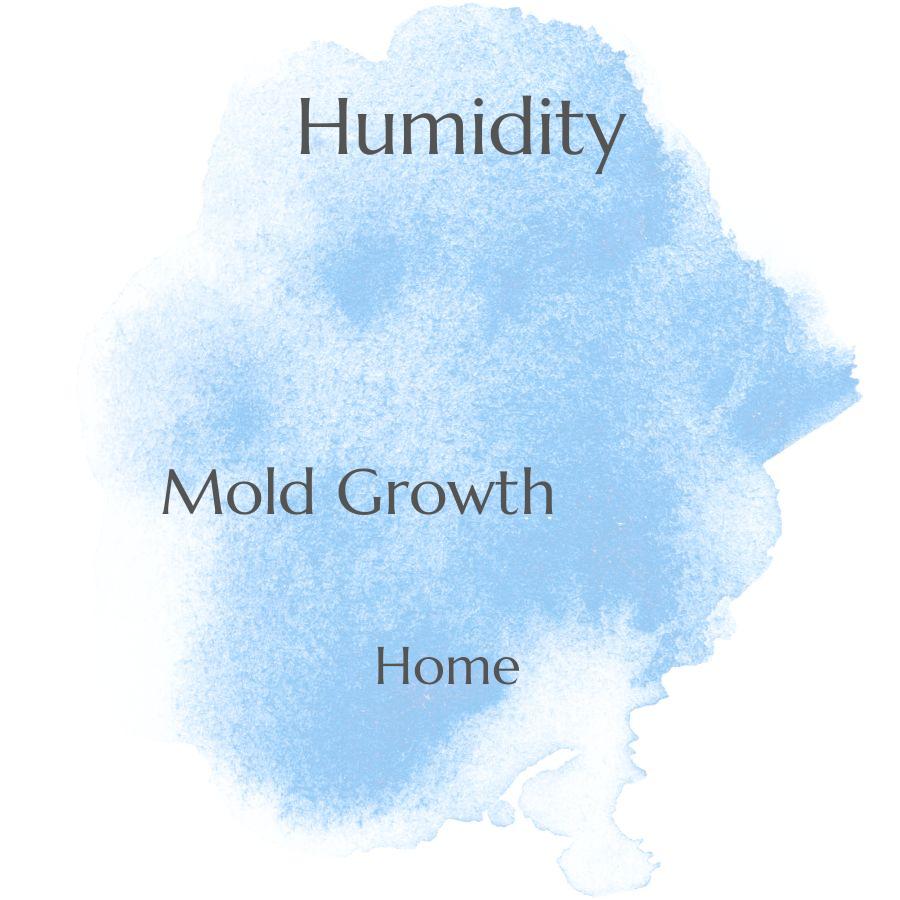Humidity has a significant effect on the growth of mold in the home, as high humidity levels provide an ideal environment for mold to thrive.
Mold is a common problem in many homes and can cause significant health issues if left unchecked. But what causes mold to grow in the home, and how does humidity affect this growth? In this blog post, we’ll explore the relationship between humidity and mold growth, as well as tips for preventing it from taking over your home.
Types of Mold

There are many different types of mold, each with its own characteristics and growth patterns. Some common types of mold include Aspergillus, Cladosporium, Penicillium, Alternaria, Stachybotrys chartarum (also known as black mold), Aureobasidium pullulans (also known as pink or orange mold), Fusarium, Trichoderma viride (also known as green mold), and Chaetomium globosum (also known as gray or white mold).
Humidity plays an important role in the growth of these molds. High humidity levels provide ideal conditions for spores to germinate and spread quickly throughout the home.
The moisture also helps create a hospitable environment for fungi to thrive by providing nutrients such as organic matter from dust particles or other sources. In addition to this favorable environment for growth, high humidity levels can also cause condensation on surfaces which further encourages the development of colonies of fungi.
In contrast to high humidity levels which promote fungal growth, low humidity levels inhibit it due to lack of moisture needed for spore germination and colonization. This means that if you want to reduce your risk of developing a problem with indoor molds then you should try to keep your home’s relative humidity level below 50%.
Humidity Levels
Humidity is a measure of how much water vapor is present in the air, and it can range from 0% to 100%. When humidity levels are too high, it creates an environment that is conducive to mold growth.
High humidity encourages spores to germinate and grow, as well as providing moisture for them to feed on. On the other hand, low humidity can inhibit mold growth by making it difficult for spores to germinate and survive.
Therefore, controlling indoor humidity levels is essential for preventing or reducing mold growth in your home.
Temperature
Mold spores need a certain temperature range to thrive and reproduce, and this range varies depending on the type of mold. Generally, molds prefer temperatures between 40-100°F (4-38°C).
If temperatures are too low or too high, it can inhibit or even prevent mold growth. High humidity also plays a role in mold growth as it provides moisture for the spores to feed on.
When relative humidity levels exceed 60%, it creates an ideal environment for molds to grow and spread quickly. On the other hand, if relative humidity levels drop below 30%, then there is not enough moisture available for molds to survive and they will die off over time.
Therefore, both temperature and humidity must be taken into consideration when trying to control mold growth in your home. Keeping relative humidity levels between 30-60% while maintaining temperatures within 40-100°F (4-38°C) will help keep your home free from unwanted mold infestations.
Air Circulation
Poor air circulation can lead to high levels of humidity, which creates a favorable environment for mold growth. When air is not circulated properly, moisture builds up and becomes trapped in certain areas of the home.
This moist environment provides ideal conditions for mold spores to thrive and reproduce quickly. Stagnant air prevents fresh oxygen from entering the space, further promoting mold growth.
To prevent this from happening, it is important to ensure that there is adequate ventilation throughout your home so that stale air can be replaced with fresh oxygen-rich air on a regular basis.
Moisture Sources
Moisture sources can come from both inside and outside of the home. Inside sources include activities such as cooking, showering, washing clothes or dishes, and running humidifiers or dehumidifiers.
Outside sources include rainwater seeping into the house through cracks in walls or windowsills, flooding from nearby bodies of water like rivers or lakes, and high levels of humidity due to climate conditions. All these moisture sources contribute to an increase in indoor humidity which can lead to mold growth if not properly managed.
Building Materials
Different building materials have different levels of porosity, which determines how much moisture they can absorb and retain. Materials with higher porosity, such as wood, drywall, and insulation, are more likely to absorb moisture from humid air and provide a suitable environment for mold growth.
On the other hand, materials with lower porosity such as concrete or metal are less likely to absorb moisture from humid air and therefore provide a less hospitable environment for mold growth. Some building materials may contain organic compounds that can act as food sources for mold spores; this further increases their susceptibility to mold growth when exposed to high humidity levels.
Cleaning and Maintenance Practices
Humidity is one of the main factors that can affect mold growth, so it is important to keep humidity levels low in order to prevent or reduce mold growth. Regularly cleaning surfaces with a damp cloth or mop can help remove any existing mold spores, as well as dirt and dust which can provide food for mold.
Using an air conditioner or dehumidifier can help reduce humidity levels in your home and make it less hospitable for mold growth. It is also important to repair any leaks or water damage quickly, as this will prevent moisture from accumulating and creating an environment where mold can thrive.